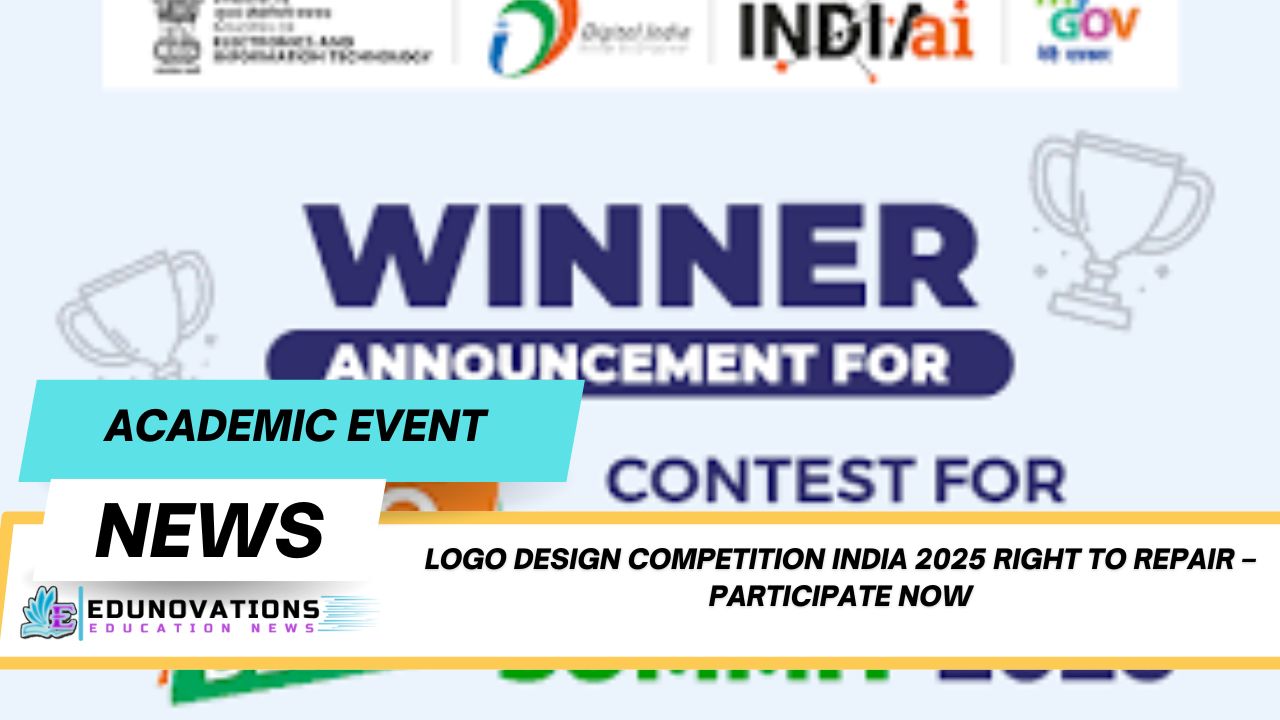Join the Logo Design Competition India 2025 Right to Repair to showcase your creativity in sustainable product design under the Repairability Index initiative.
National Law University Delhi (NLU Delhi), in collaboration with the Department of Consumer Affairs (DCA), Government of India, has launched a pioneering Logo Design Competition India 2025 Right to Repair. This initiative invites creative minds across the nation to design an emblem representing the Right to Repair through Repairability Index, promoting sustainable lifestyles and consumer empowerment. The competition is aligned with the LiFE Movement (Lifestyle for Environment), which emphasizes the R3 philosophy: Reduce, Reuse, and Recycle.
This initiative encourages a circular economy where consumers make informed product choices, reducing e-waste and enhancing sustainability. For more details on NCERT courses and resources to support educational preparation, visit NCERT Courses.
Understanding the Right to Repair and Repairability Index
The Right to Repair framework developed by DCA empowers consumers to assess the repairability of products. It spans four key sectors:
- Automobiles
- Mobile and Electronics
- Consumer Durables
- Farming Equipment
By participating in this competition, designers contribute to creating a visual symbol of responsible consumption, allowing consumers to choose products that are easy to repair. Products will be evaluated and rated on the Repairability Index, making consumer decisions transparent and empowering.
Key benefits include:
- Promoting mindful utilization over wasteful consumption
- Enabling comparison of repair-friendly options
- Supporting a circular economy by reducing electronic and material waste
For study materials related to current affairs and sustainable initiatives, students can refer to Current Affairs and Notes.
Competition Details and Eligibility
The competition is open to all Indian citizens aged 16 years and above as of 1st November 2025. Participants are encouraged to design original, creative, and high-resolution logos that reflect the spirit of the Repairability Index and sustainability.
Submission Guidelines:
- Upload the logo in PNG format with a transparent background (≤10 MB)
- Include a concept note (max 100 words) explaining the logo’s symbolism
- Ensure the design is free of watermarks or signatures
- AI-generated or plagiarized designs will be disqualified
The winner will receive a cash prize of ₹25,000, and the selected logo may be adopted as the official emblem of the Repairability Index Framework.
Participants can submit entries via the official application form link, ensuring all details, logo design, and concept notes are included. The last date for submission is 30th November 2025.
For free NCERT PDFs and mind maps to enhance learning, visit Downloads.
Logo Design Significance
The proposed logo will serve multiple purposes:
- Represent the Repairability Index rating visibly
- Symbolize principles of the Right to Repair and circular economy
- Act as a certification mark for consumers
The logo is expected to resonate with the ethos of sustainability, highlighting the R3 philosophy and the LiFE Movement’s vision of environmentally conscious lifestyles.
Internal Resource Recommendations:
- For MCQ practice, refer to MCQs
- To explore syllabus details, see Syllabus
- For video resources, visit Videos
Expert Insights on the Initiative
Consumer rights experts have lauded this initiative. Dr. Anil Sharma, a sustainability consultant with over 15 years of experience in circular economy frameworks, remarked:
“This competition is a remarkable step in embedding sustainability into consumer culture. The Repairability Index logo will help consumers make informed choices and drive accountability among manufacturers.”
The Repairability Index logo contest 2025 will thus create a visual tool for advocacy and education on consumer rights and environmental responsibility.
Terms and Conditions
- Open to Indian citizens aged 16+
- Submissions post-deadline will not be accepted
- Logos must be original and non-infringing
- Inappropriate or offensive content is prohibited
- Selection Committee decisions are final
- Winning logos become property of DCA
The announcement of the winner will be made on official websites of DCA and NLU Delhi. All legal disputes fall under the jurisdiction of New Delhi courts.
How to Apply
Participants need to fill out the official application form, upload their logo design and concept note, and submit them before 30th November 2025. For assistance with school contact resources, Mart India Infotech provides relevant guidance.
Toppers Use Mind Maps to score more than 95%
NCERT Class 11th Commerce Mind Maps
Add to cartOriginal price was: ₹999.00.₹199.00Current price is: ₹199.00.NCERT Class 12th Chemistry Mind Maps
Add to cartOriginal price was: ₹199.00.₹75.00Current price is: ₹75.00.NCERT Class 12th Commerce Mind Maps
Add to cartOriginal price was: ₹999.00.₹199.00Current price is: ₹199.00.NCERT Class 12th Science Mind Maps
Add to cartOriginal price was: ₹999.00.₹199.00Current price is: ₹199.00.NCERT Mind Maps For Class 10th
Add to cartOriginal price was: ₹999.00.₹199.00Current price is: ₹199.00.
Purchase Today
FAQs: Logo Design Competition India 2025 Right to Repair
- Who is eligible for the Logo Design Competition India 2025 Right to Repair?
All Indian citizens aged 16 years and above as of 1st November 2025. - What sectors does the Repairability Index cover?
Automobiles, Mobile & Electronics, Consumer Durables, Farming Equipment. - What format should the logo be submitted in?
PNG format, high-resolution, transparent background, ≤10 MB. - Is plagiarism allowed in the competition?
No, AI-generated or plagiarized designs will be disqualified. - What is the prize for the winner?
₹25,000 cash prize; the logo may be officially adopted by DCA. - How can I submit the logo design and concept note?
Through the official application form link provided by NLU Delhi. - Can I include my signature or watermark on the design?
No, all logos must be free of signatures or watermarks. - What does the Repairability Index logo symbolize?
It represents repair-friendly products, sustainability, and circular economy principles. - Where will the winner be announced?
On the official websites of DCA and NLU Delhi. - How does this competition promote sustainability?
It encourages responsible consumption, extends product lifecycle, and reduces e-waste.














